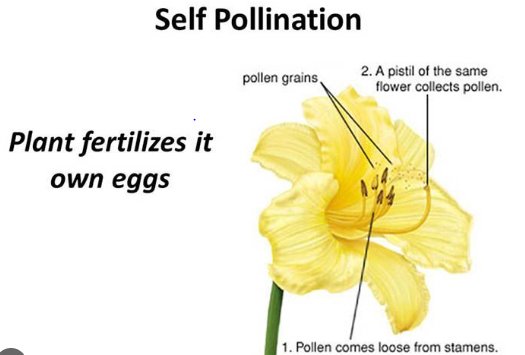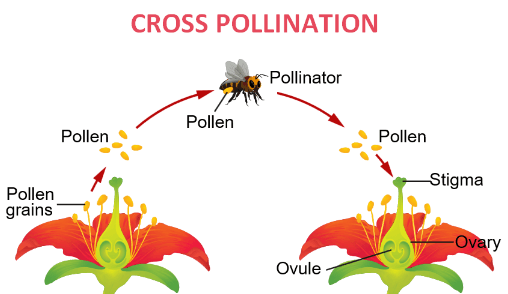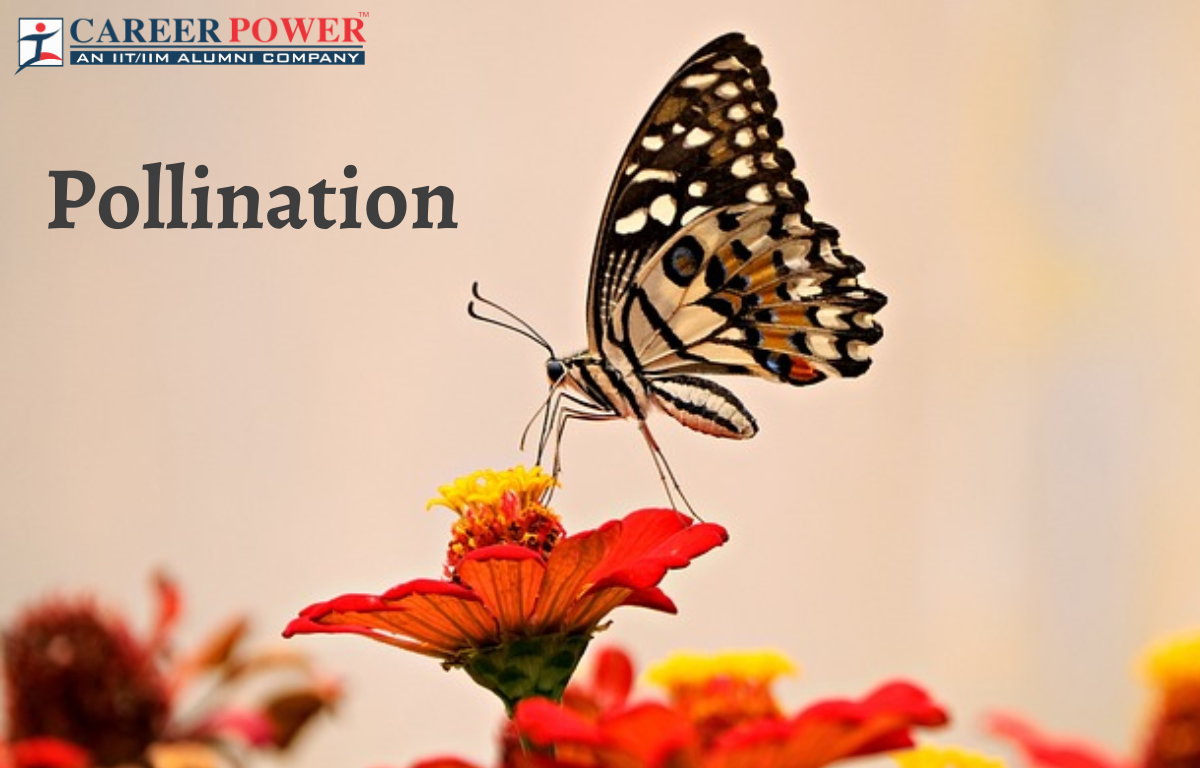The movement of pollen grains from the Anther to the Stigma of the same flower OR different flowers is called Pollination. When pollination happens within the same flower of a plant, it is called Autogamy. But if pollen grains move from the flower of one plant to the stigma of another plant’s flower, it is known as Xenogamy or Allogamy. The movement of pollen grains mainly takes place by wind, water, insects, and animals. The things that help in pollination are called pollinating agents.
What is Pollination?
The process of transfer of pollen grains from the Male Anther of a flower to the Female Stigma is called Pollination. It can take place either in a single flower itself OR in different flowers. For good results, pollen grains must be transferred from the same species of flower. Pollination helps in the production of seeds and food. Most of the world’s flowering plants and 35% of the world’s food crops depend on animal pollination. There are two types of pollination in Biology, which are self-pollination and cross-pollination. Pollination is one of the most important topics for biology students from classes 9 to 12 of any school board.
Types of Pollination
As we know pollination can either take place in the same flower or different flowers. So by this Pollination is of two different types one is self-pollination and another one is cross-pollination.
Self-pollination: Self-pollination is the process in which plants pollinate themselves, by transferring pollen from Anther to the Stigma of the same flower. It does not require any external pollinators like wind, insects, or other animals.
Cross-pollination: Cross-pollination is the process in which plants do not pollinate by themselves, it takes place by the transfer of pollen grains from the anther of one flower to the stigma of another flower of two different plants. It requires external pollinators like win, water, insects, and other animals.
Now let us discuss briefly both types of pollinations.
Self Pollination
- The Self Pollination takes place when the pollen grains are transferred from the Anther to the Stigma of a flower OR different flowers of the same plant.
- For Self-pollination, the flowers should be genetically identical.
- The transfer of pollen grains takes place directly from the anther to the stigma.
- A limited number of pollen grains are transferred.
- Self-pollination can occur even when the flower is closed.
- This process does not require any pollinating agents for the transfer of pollen grains.
- Self Pollination decreases the genetic variations as it takes place either in a flower itself OR in different flowers of the same plant

Cross-Pollination
- The Cross Pollination takes place when the pollen grains are transferred from the Anther to the Stigma of flowers of different plants
- Cross-Pollination takes place between two flowers that are genetically unidentical
- The transfer of pollen grains takes place with the help of wind, insects, animals, water, etc.
- A large number of pollen grains are transferred
- Cross-Pollination can occur only when the flowers are open
- This process requires pollinating agents for the transfer of pollen grains
- Cross-Pollination increases the level of genetic variations, as it takes place between two flowers of different species

How is Pollination different from Fertilization?
As we know both Pollination and Fertilization are very important processes in the reproduction of flowering plants. But both processes are different from each other in many ways.
Pollination: During the process of pollination pollen grains get transferred from the male reproductive part anther to the female reproductive part stigma of either the same flower or different flowers. Pollination is the crucial step in plant reproduction which allows fertilization, which leads to the formation of seeds and fruits.
Fertilization: During fertilization, the male and female gamete (pollen grains and ovules) combines together and form a zygote. Fertilization takes place after successful pollination fertilization also plays a huge role in plant reproduction and propagation.
Some differences between fertilization and pollination are mentioned below.
Pollination
- Pollination is the process of transfer of pollen grains from the male reproductive part Anther to the female reproductive part Stigma of the same or different flower of the same plant
- Pollination is of two main types: Self Pollination and Cross Pollination
- It takes place with the help of Pollinating Agents such as water, wind, insects, animals, etc.
- The main purpose of pollination is the transfer of pollen grains, it also promotes genetic diversity within plants population
Fertilization
- Fertilization is the process of fusion of male and female gametes (sperm and egg cells) to form a zygote
- Fertilization is mainly of three different types: Porogamy, Chalazogamy, and Mesogamy according to the entering of ovules in the pollen tubes. Porogamy is most commonly found
- After the fertilization is successful, the ovules change to seeds and the ovary changes to fruit
- The main purpose of fertilization is to combine the genetic material of male and female gametes for the development of a new plant embryo.
Pollination is critical for the reproduction and survival of many plant species, and it also plays a vital role in maintaining biodiversity and supporting various ecosystems. Additionally, it has a significant impact on the production of fruits and seeds that are crucial for the food web and human livelihoods.



 50 Vegetables Name for Kids in English a...
50 Vegetables Name for Kids in English a...
 Food Chain: Definition, Types, Examples,...
Food Chain: Definition, Types, Examples,...
 Human Respiratory System: Definition, Di...
Human Respiratory System: Definition, Di...













